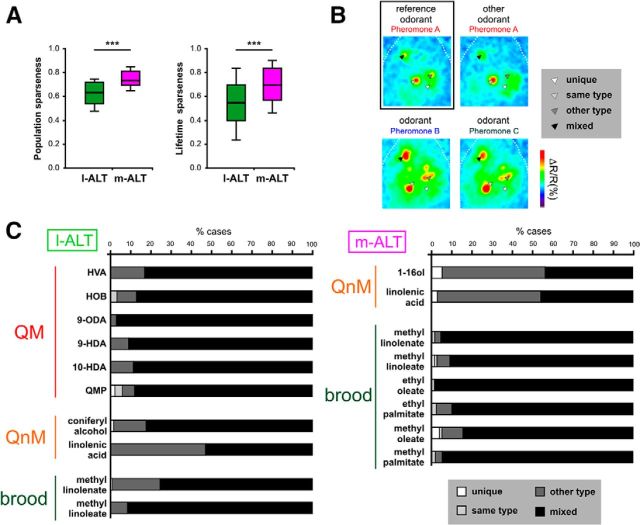Figure 4.
Representation sparseness and glomerular coactivation for queen and brood pheromone. A, Population sparseness and lifetime sparseness measured from l-ALT and m-ALT recordings to queen and brood pheromones. Boxes represent the median and first and third quartiles. Whiskers represent 10% and 90% percentiles. ***p < 0.001. B, Glomerular coactivation. Principle for the classification of glomeruli according to four classes depending on their coactivating odorants from the same and/or another pheromone (putative example). For each reference odorant, all activated glomeruli were classified as follows: unique glomerulus (white arrow, only activated by the reference odorant), same type glomerulus (light gray arrow, activated by the reference odorant and by another odorant of the same pheromone), other type glomerulus (dark gray arrow, activated by the reference odorant, not by other odorants of the same pheromone but activated by other pheromone types; here Pheromones B and C), or mixed glomerulus (black arrow, activated by odorants from both the same and other pheromone types). C, Proportions of the four classes of glomeruli for each pheromone compound and for all the glomeruli they activate: white represents unique; light gray represents same type; dark gray represents other type; black represents mixed.

